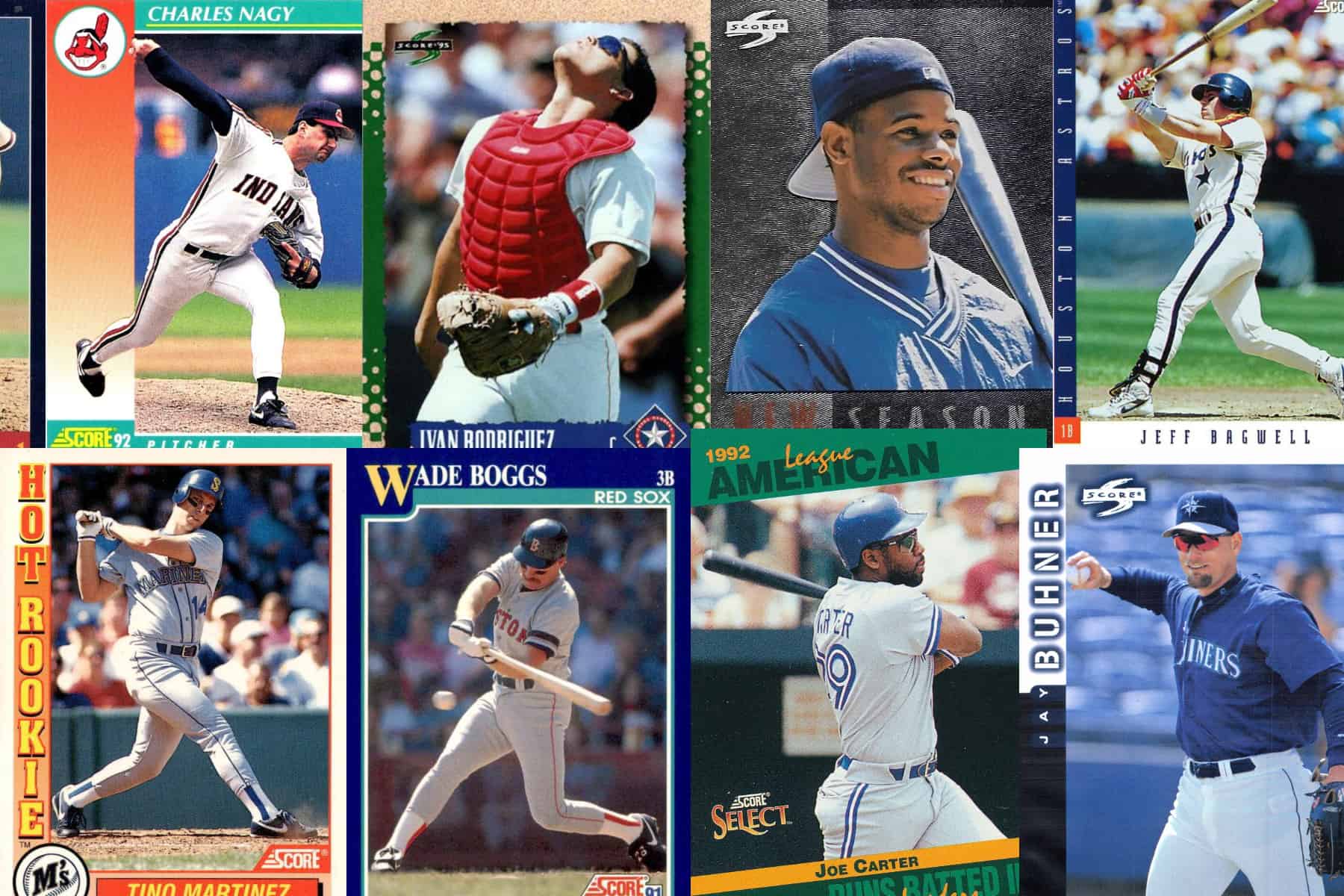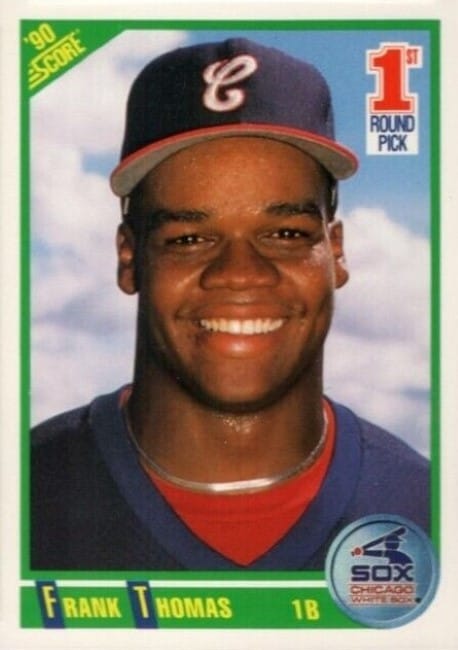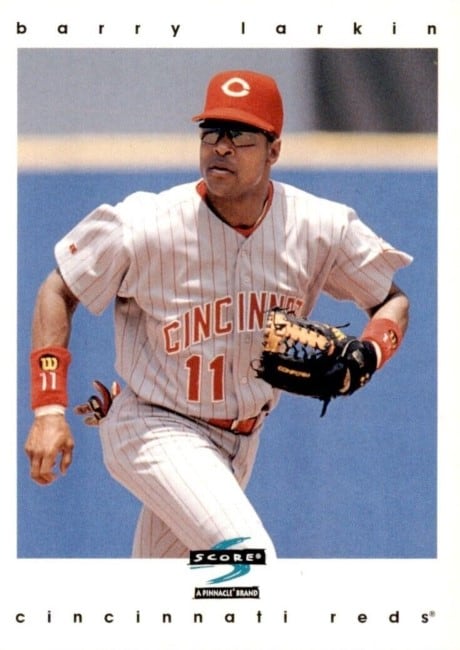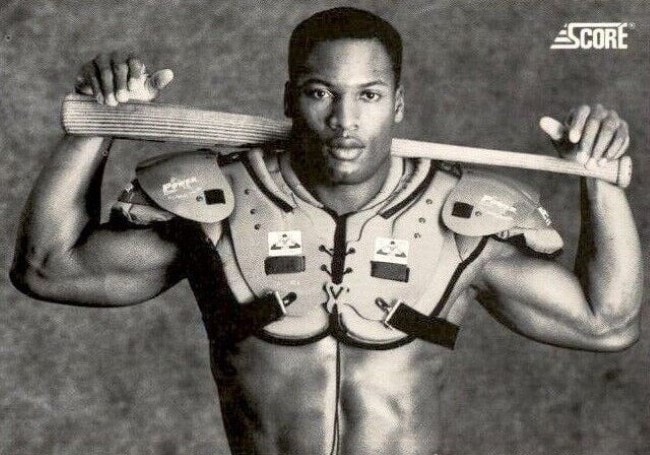Your cart is currently empty!

Score baseball cards burst onto the scene in 1988, shaking up a hobby dominated by the established “Big Three”: Donruss, Fleer, and Topps. With innovation, vibrant design, and a focus on player statistics, Score quickly carved its niche in the hearts of collectors. This article delves into the exciting and sometimes turbulent history of Score, from its revolutionary beginnings to its present-day status as a nostalgic favorite.
Score’s Early History (1988-1991)

The story of Score starts with Optigraphics, a company known for lenticular printing technology used in novelty items. Lenticular printing is a fascinating technology that creates the illusion of movement, depth, or animation when you move the image. This is accomplished by placing a ridged plastic sheet over the image.
Recognizing the potential in the trading card market, Optigraphics rebranded as Pinnacle Brands and unleashed Score in 1988. This first year set broke the mold with several innovations:
- Colorful borders: Each of the 660 cards sported a distinct red, orange, yellow, green, blue, or violet border, a stark contrast to the predominantly white designs of their competitors.
- Full-color backs: Score was the first major set to utilize full, glossy color on the backs of their cards.
- Detailed biographies: The backs boasted extensive player bios, exceeding the information depth offered by other brands.
These features, coupled with a focus on showcasing up-and-coming stars alongside established veterans, resonated with collectors. As with many of the secondary brands of the 1980s, Score’s choices made them stand out from the traditional designs of Topps, which had been around since 1951.
Perhaps the most famous Score set came in 1990. The set is known for Frank Thomas’s rookie card, and also for a famous black-and-white Bo Jackson “Double Play” card showcasing him in both baseball and football gear.
Score Baseball Cards Expansion (1992-1998)

The early success propelled Score into a period of expansion. In 1992, Score partnered with McDonald’s, offering special edition cards with Happy Meals. This further solidified their presence not only in the hobby but in pop culture. They also released multiple series per year, introduced parallels and inserts.
Notable achievements include:
- Large sets: The 1991 and 1992 Score sets topped out at 893 cards – more than the number of baseball players active in MLB at any one time!
- Inserts as standard: Every year of Score cards featured at least one insert set, which was a novelty at the time. As time went on, they expanded to more sets, and with specified odds and print runs.
- 3D holographic cards: Score was heavily involved in popularizing holographic cards in the early 1990s. These cards featured the 3D movement popularized by their parent company, Pinnacle. Examples include the 1991 and 1991 Score World Series Trivia cards.
However, the “junk wax era” of overproduction began to cast a shadow. With an influx of cards from various brands, saturation reached unprecedented levels, impacting the value of individual cards.
Challenges and Acquisitions (1999-2008)
The late 1990s and early 2000s saw Score facing increased competition and market saturation. They experimented with various strategies, including focusing on budget-friendly products and partnering with minor league teams. While some sets, like the 2001 Score Rookies & Traded with Albert Pujols’ rookie card, enjoyed success, the brand struggled to recapture its earlier dominance.
In 2008, Upper Deck acquired Pinnacle Brands, bringing the Score name under their umbrella. Upper Deck continued to produce Score sets for several years, incorporating them into their product lines while maintaining some of the classic design elements.
Score Baseball Cards Legacy

Today, Score baseball cards hold a special place in the hobby, primarily as collectibles from a bygone era. Vintage Score sets continue to have dedicated collectors, with some cards, particularly rookie cards of Hall of Famers, commanding respectable prices. Upper Deck occasionally releases Score-branded products, often catering to the nostalgia market.
Conclusion:
Score baseball cards left an undeniable mark on the hobby. Their innovations, bold design, and focus on player information helped them stand out in a crowded market. While overproduction challenges later in their run affected their overall value, Score remains a cherished brand for many collectors, reminding them of a time when collecting was about excitement, discovery, and the thrill of finding that next gem.
Tags:
Share:
